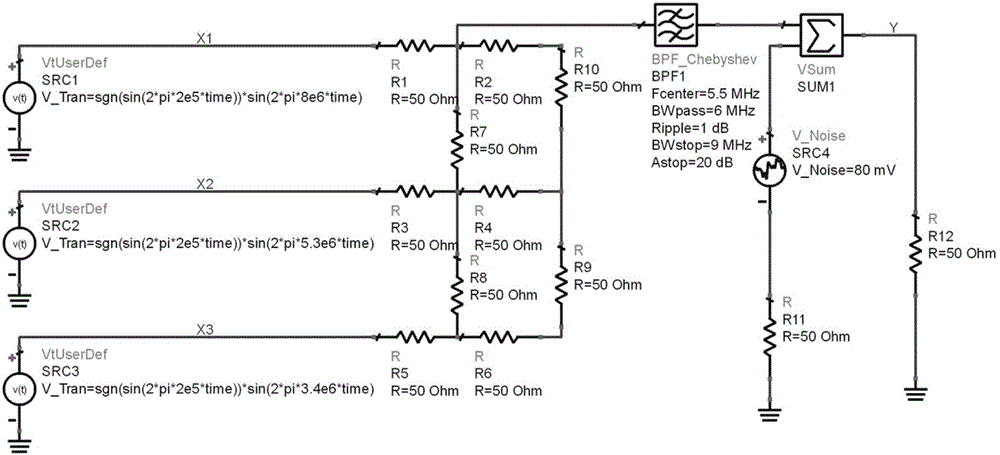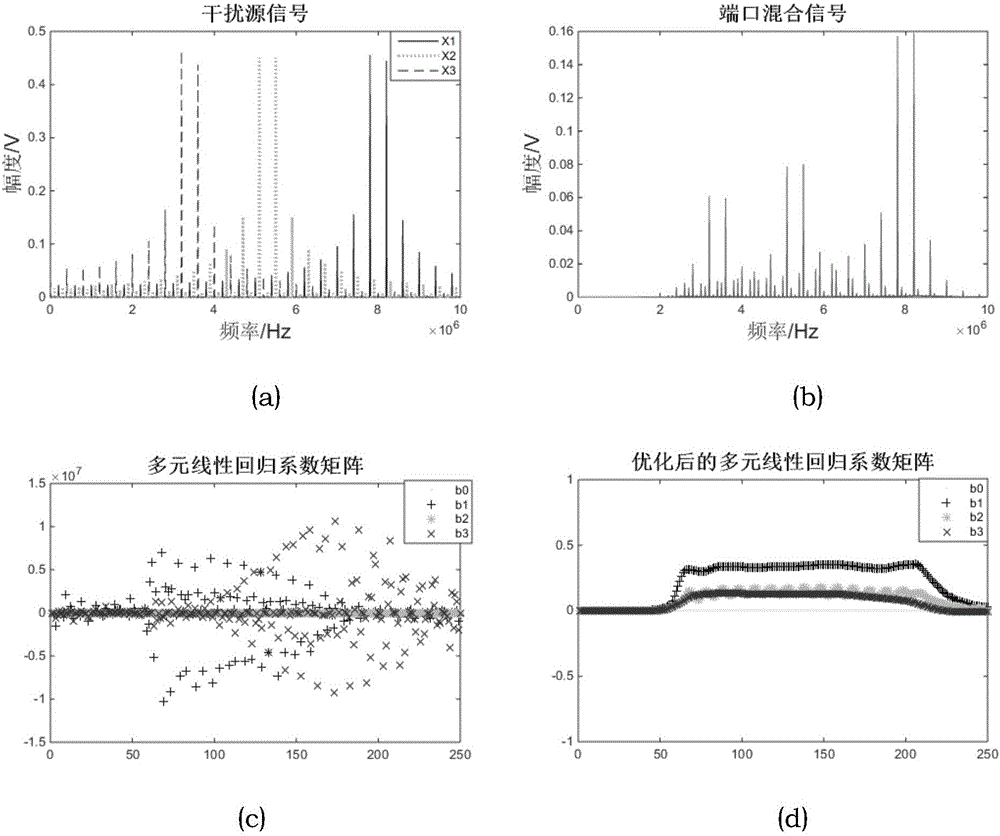Method for building conducted interference coupling channel multiple linear regression model by near frequency point sampling
A multiple linear regression, conducted interference technology, applied in special data processing applications, instruments, electrical digital data processing, etc., can solve the problems of small model application range, interference coupling channels without any prior knowledge, etc., to eliminate environmental noise. Effect
- Summary
- Abstract
- Description
- Claims
- Application Information
AI Technical Summary
Problems solved by technology
Method used
Image
Examples
Embodiment
[0049] In the experiment, ADS software is used to build the coupling circuit, such as figure 2 , the coupling path is composed of a pure resistance circuit, a Chebyshev low-pass filter, and 80mV Gaussian white noise. The voltage source is used to generate three pulse modulation signals as the interference source signal to simulate the interference source signal in the actual equipment under test. The simulation obtained Signal v1 simulates the mixed signal measured at the actual DUT port. The expressions of the three interferer signals are as follows:
[0050] x 1 (t)=sgn(sin(2π×f m ×t))sin(2π×f 1 ×t)
[0051] x 2 (t)=sgn(sin(2π×f m ×t))sin(2π×f 2 ×t)
[0052] x 3 (t)=sgn(sin(2π×f m ×t))sin(2π×f 3 ×t)
[0053] Among them, f m is the distance between each harmonic frequency point of the interference source signal, which is 0.2MHz, f 1 ,f 2 ,f 3is the center frequency of the signal, respectively f 1 = 8MHz, f 2 = 5.3MHz, f 3 = 3.4MHz.
[0054] Step 1. Signal...
PUM
 Login to View More
Login to View More Abstract
Description
Claims
Application Information
 Login to View More
Login to View More - R&D
- Intellectual Property
- Life Sciences
- Materials
- Tech Scout
- Unparalleled Data Quality
- Higher Quality Content
- 60% Fewer Hallucinations
Browse by: Latest US Patents, China's latest patents, Technical Efficacy Thesaurus, Application Domain, Technology Topic, Popular Technical Reports.
© 2025 PatSnap. All rights reserved.Legal|Privacy policy|Modern Slavery Act Transparency Statement|Sitemap|About US| Contact US: help@patsnap.com



